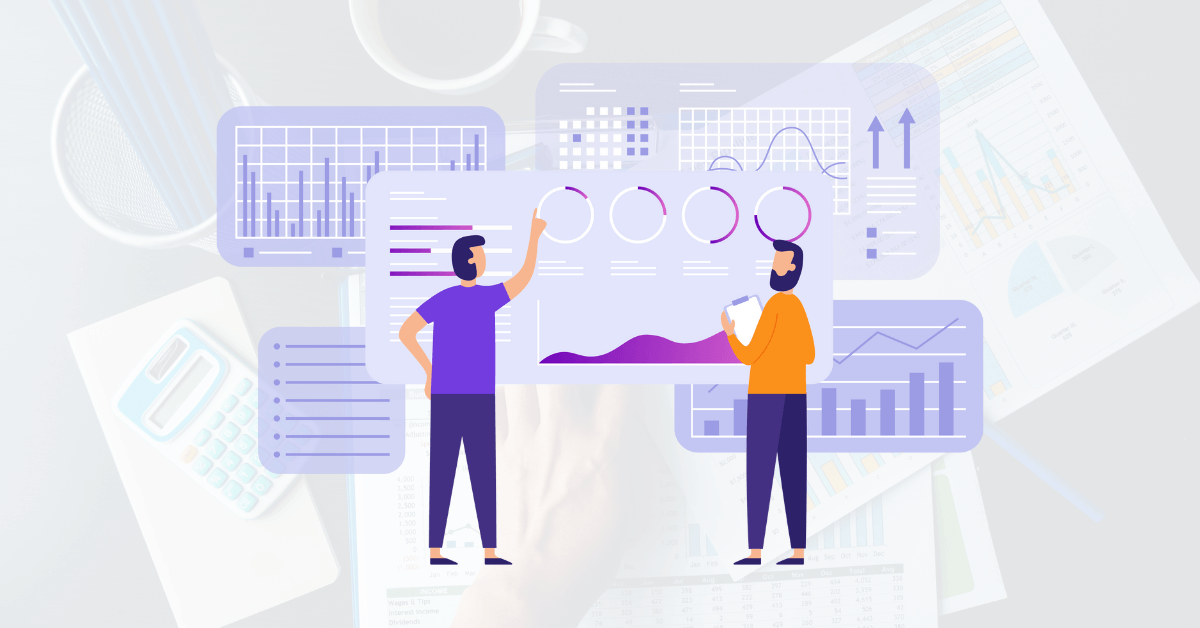Contents
- 1 Digital Marketing Cost Per Lead (CPL) Calculator
- 1.1 📢 How UAE Businesses Can Lower Marketing Costs with a Cost Per Lead (CPL) Calculator
- 1.1.1 Why Marketing Costs are High in the UAE
- 1.1.2 📊 What is a Cost Per Lead (CPL) Calculator?
- 1.1.3 🛠 How to Use the CPL Calculator? (Step-by-Step Guide)
- 1.1.4 🎯 Why UAE Businesses Need This Tool?
- 1.1.5 📈 How to Improve Your CPL? (Smart Marketing Tips)
- 1.1.6 🚀 Get Started – Try the Free CPL Calculator Today!
- 1.2 Frequently Asked Questions (FAQ) About Digital Marketing Cost Per Lead (CPL) Calculator
- 1.1 📢 How UAE Businesses Can Lower Marketing Costs with a Cost Per Lead (CPL) Calculator
Digital Marketing Cost Per Lead (CPL) Calculator
📢 How UAE Businesses Can Lower Marketing Costs with a Cost Per Lead (CPL) Calculator
Why Marketing Costs are High in the UAE
Running Google Ads, Facebook campaigns, SEO, and Email Marketing in the UAE can be expensive. Many businesses spend thousands of dirhams on ads but don’t know if they are getting value for money.
This is where a Cost Per Lead (CPL) Calculator helps! It tells you:
✅ How much it costs to get one lead
✅ Which marketing channel is performing the best
✅ How to reduce marketing costs and improve ROI
For Dubai businesses, startups, and digital agencies, understanding CPL is the key to spending smartly and making more profits
📊 What is a Cost Per Lead (CPL) Calculator?
A Cost Per Lead Calculator is a tool that helps UAE businesses measure how much they spend to get one customer lead.
It calculates:
🔹 Total marketing spend (AED)
🔹 Total number of leads generated
🔹 CPL for each marketing channel (Google Ads, Facebook Ads, SEO, Email Marketing)
🔹 Overall conversion rate (%)
By using this tool, you can identify which marketing platform is working best for you and where you need to optimize your budget.
🛠 How to Use the CPL Calculator? (Step-by-Step Guide)
Using this tool is super simple!
💰 Step 1: Enter your total marketing spend (AED)
📞 Step 2: Enter the total number of leads you received
📊 Step 3: Add the spend breakdown for Google Ads, Facebook Ads, SEO, and Email Marketing
✅ Step 4: Click “Calculate CPL”
📉 Step 5: See your Cost Per Lead (CPL) and Conversion Rate
You’ll also see a pie chart that helps you analyze which platform is using the most budget.
🎯 Why UAE Businesses Need This Tool?
📍 Dubai and the UAE are competitive markets, and businesses spend heavily on marketing. However, many fail to track their exact cost per lead.
✅ Ecommerce businesses – Check if your ads on Google and Facebook are profitable
✅ Real estate companies – Find out which ad campaigns generate more leads
✅ Small businesses & startups – Measure Google Ads and SEO performance before increasing budget
✅ Marketing agencies – Use this tool to track CPL and optimize client ad spend
Instead of guessing where your budget is going, this tool gives clear numbers so you can reduce waste and focus on high-performing channels.
📈 How to Improve Your CPL? (Smart Marketing Tips)
If your Cost Per Lead (CPL) is high, here are some easy ways to reduce it:
✔ Target the Right Audience: Avoid broad targeting on Facebook and Google Ads.
✔ Optimize Your Website: A slow or confusing website loses leads and increases CPL.
✔ Improve Ad Copy & Creatives: Test different ad headlines, images, and videos.
✔ Use Retargeting Ads: Retarget past visitors for a lower cost per lead.
✔ Track & Adjust: Use tools like Google Analytics to monitor results and make adjustments.
If your CPL is too high, reallocate budget to the platform that is generating the best quality leads at the lowest cost.
🚀 Get Started – Try the Free CPL Calculator Today!
If you are spending money on Google Ads, Facebook Ads, SEO, or Email Marketing, you must track your Cost Per Lead.
Use our Digital Marketing CPL Calculator today and find out how much each lead costs your business!
📌 Try the Free CPL Calculator Now!
Tool Accuracy Info: [Read More]
This is a free tool designed to give you an idea of suitable marketing strategies for your business. However, results may not be 100% accurate, and we recommend consulting a professional for a tailored approach.
Frequently Asked Questions (FAQ) About Digital Marketing Cost Per Lead (CPL) Calculator
CPL (Cost Per Lead) is the amount of money a business spends to acquire a single lead through marketing efforts.
Tracking CPL helps businesses optimize their marketing budgets, improve ROI, and make data-driven decisions to reduce acquisition costs.
CPL is calculated using the formula: CPL = Total Marketing Spend ÷ Number of Leads Generated.
A good CPL depends on the industry, but businesses should aim for a CPL that allows profitability and a high return on ad spend (ROAS).
Factors include target audience, marketing channels, ad quality, landing page optimization, and competition level.
By improving ad targeting, optimizing landing pages, using retargeting ads, and enhancing audience segmentation.
Not necessarily. A lower CPL is beneficial, but the quality of leads matters more in determining ROI.
PPC (Pay-Per-Click) advertising can lead to high CPL if not optimized properly. Effective targeting and bid management help control CPL.
Email marketing and organic SEO often have the lowest CPL, while Google Ads and social media can be higher but deliver fast results.
Businesses can enter their total ad spend and the number of leads generated into the calculator to determine their CPL instantly.
A good CPL varies by industry. For example, real estate CPL may be higher than e-commerce, but businesses should focus on maximizing ROI rather than just lowering CPL.
A lower CPL is meaningless if the leads are unqualified. Businesses should balance cost efficiency with lead quality by targeting the right audience.
CPL measures the cost to generate a lead, whereas CPA tracks the cost of acquiring a paying customer. A lower CPL does not always mean a lower CPA.
Marketing automation helps lower CPL by using AI to optimize ad bidding, segment audiences, and personalize content, improving efficiency.
Landing pages with clear CTAs, fast load speeds, and compelling content convert more visitors into leads, reducing overall CPL.
Strategies include A/B testing ads, optimizing website UX, using retargeting ads, and improving ad targeting through data analytics.
In many cases, social media platforms like Facebook and LinkedIn offer lower CPLs compared to Google Ads, but the lead quality varies.
Segmenting audiences based on behavior, demographics, and interests improves ad targeting, reducing CPL and increasing conversion rates.
Retargeting ads show ads to users who have previously visited your site, increasing the chances of conversion at a lower cost per lead.
Email marketing is a cost-effective way to generate leads from existing traffic by nurturing prospects and re-engaging inactive users.
High-value content such as blogs, ebooks, and webinars attract organic leads, lowering CPL compared to paid advertising.
A lead magnet (e.g., free guide, eBook, consultation) attracts high-quality leads, reducing CPL by encouraging sign-ups in exchange for value.
Using data-driven analysis, businesses should invest more in high-converting channels while optimizing or reducing spend on underperforming campaigns.
AI-powered tools optimize ad bidding, predict lead value, and automate reporting, allowing businesses to manage CPL more effectively.
Positive reviews build trust and credibility, leading to higher conversion rates and lower acquisition costs.
Video content increases engagement and conversion rates, leading to lower CPL for platforms like YouTube and Facebook Ads.
Businesses should track lead quality, conversion rates, and overall revenue impact, rather than just focusing on lowering CPL.
UTM parameters help track which campaigns and sources generate leads, enabling businesses to optimize CPL.
By using CAPTCHA forms, lead verification tools, and targeting strategies that prioritize engaged users.
The future includes AI-driven lead scoring, real-time CPL tracking, automation in campaign optimization, and deeper data insights.
AI analyzes historical data to predict high-converting leads, enabling businesses to allocate budgets efficiently and reduce CPL.
Multi-touch attribution assigns value to each touchpoint in a customer’s journey, helping businesses optimize channels that contribute to conversions.
Conversion pixels track user actions after clicking an ad, providing data to refine targeting and optimize ad spend.
Real-time CPL tracking helps marketers adjust campaigns instantly, preventing wasted spend on underperforming ads.
UTM tracking allows businesses to track which campaigns, keywords, or platforms generate the most cost-effective leads.
Lead scoring ranks leads based on intent and engagement, helping businesses prioritize high-quality leads and optimize CPL.
Popular CPL tracking tools include Google Analytics, HubSpot, Marketo, and Salesforce.
Targeting leads in high-converting regions helps businesses allocate ad spend more effectively, reducing CPL.
First-click attribution credits the first interaction, while last-click focuses on the final conversion step. Using both helps businesses refine CPL strategies.
Cross-device tracking ensures leads are counted accurately when users switch between mobile, tablet, and desktop.
Predictive modeling identifies customer behaviors that lead to conversion, allowing businesses to focus on high-value leads and lower CPL.
A/B testing helps businesses identify which landing page design, CTA, or copy leads to the lowest CPL and highest conversions.
Retargeting users who previously engaged with content or ads increases conversion rates, reducing CPL.
Automating CPL reporting with tools like Google Data Studio and CRM integrations helps track performance without manual effort.
AI chatbots engage visitors instantly, capturing high-intent leads at a lower CPL than traditional forms.
Heatmaps show where users engage most on a website, helping businesses optimize conversion paths and lower CPL.
During high-demand seasons, CPL may increase due to competition, while off-peak times may offer lower costs per lead.
Common mistakes include failing to segment data, ignoring attribution models, and not tracking CPL in real time.
Understanding how customers move through the funnel helps businesses refine touchpoints and reduce CPL.
The future includes AI-driven lead qualification, voice search optimization, and predictive marketing automation to track and lower CPL more effectively.






